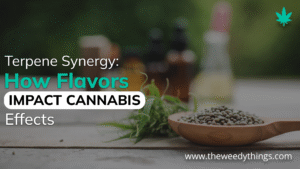Cannabis is no longer just a counterculture symbol — it’s a booming, billion-dollar industry. As legalization expands globally and stigma fades, cannabis brands are transforming their marketing strategies to stay competitive in 2025. From AI-driven personalization to blockchain-based loyalty programs, this year marks a massive leap in how cannabis is branded, advertised, and sold.
Let’s explore how cannabis marketing has evolved and which cutting-edge strategies will dominate in 2025.
From Taboo to Trendy: A Quick Look Back
Marketing cannabis was once almost impossible due to strict regulations and public perception. Brands relied on word-of-mouth, in-store promotions, or indirect content due to ad bans on major platforms.
By 2025, the game has changed — brands now use:
- Targeted digital platforms (like Weedmaps, Leafly)
- Influencer partnerships
- Narratives driven by the community
- Educative materials to foster confidence
2025 Marketing Trends and Strategies for Cannabis Brands
1. Omnichannel Digital Presence
- Brands are now present across websites, social media, mobile apps, podcasts, and even the Metaverse.
- Interactive 3D product previews and AR-enhanced packaging are rising.
- Platforms like Instagram, X (Twitter), and Threads allow cannabis-friendly, informative content with compliance in mind.
2. AI-Powered Personalization
- AI tools are being used to personalize content, emails, and ads based on user preferences, behavior, and buying history.
- Chatbots with cannabis education features help guide customer purchases 24/7.
3. Influencer & Creator Collaborations
- Micro-influencers and niche Micro-influencers and niche fitness, wellness, and lifestyle creators are key to building credibility and targeting specific demographics.fitness, wellness, and lifestyle creators are key to building credibility and targeting specific demographics.
- Live sessions, reels, product reviews, and sponsored giveaways dominate platforms like TikTok (where allowed) and Instagram.
4. SEO and Content-Driven Education
- Cannabis brands are shifting to blogs, podcasts, videos, and newsletters to share knowledge on strains, usage, legality, and wellness.
- SEO-optimized educational content boosts trust and Google rankings.
5. Smart Packaging & QR Marketing
- 2025 sees a rise in interactive packaging with QR codes that lead to product origins, lab test results, and loyalty programs.
- Some brands offer scannable packaging with AR tutorials or strain effects previews.
Compliance is Still King
Despite the innovation, cannabis marketing in 2025 still requires strict legal awareness:
- Avoid targeting minors
- No medical claims without proof
Geographically limited advertising
Stay updated on state and international ad laws
Many brands hire cannabis-specialized legal advisors or use platforms built to ensure automated compliance.
Case Studies: Brands Doing It Right
1. Dosist
Uses clean, health-focused branding and educational packaging to reach wellness consumers.
2. Cann Social Tonics
Leverages Instagram influencers and queer-positive marketing to connect with young adults.
3. Curaleaf
Combines email marketing and in-store events to build long-term customer loyalty.
Conclusion:
The cannabis industry in 2025 is no longer marketing in the shadows. It’s bold, data-driven, visually appealing, and hyper-personalized. From AI to AR, from influencer campaigns to blockchain loyalty — cannabis marketing is evolving fast.
To stand out in this crowded space, brands must balance creativity with compliance, and embrace digital tools that connect them directly with their community.
Frequently Asked Questions
Still limited. Some regions allow hemp/CBD ads, but cannabis ads remain restricted. Brands use SEO and influencer marketing instead.
Instagram, Leafly, Weedmaps, YouTube (educational), blogs, podcasts, and email marketing platforms.
Yes, if done with disclaimers, age-gated content, and compliant language. Micro-influencers are often the safest and most effective choice.
AI helps in personalized product recommendations, chatbot support, content generation, and campaign targeting.
making exaggerated medical claims, disregarding compliance, or employing pushy sales tactics that violate local or platform regulations.




